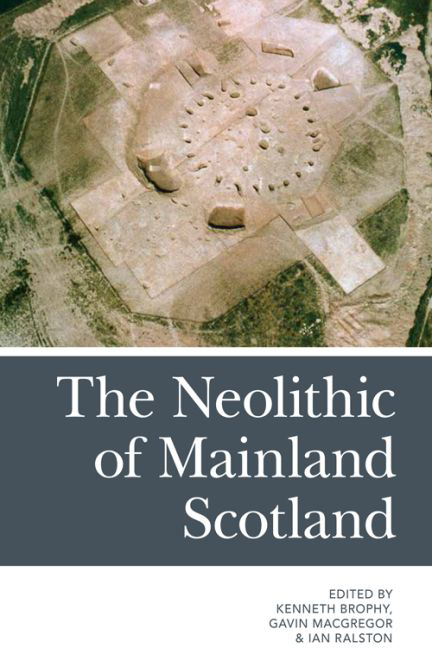Book contents
- Frontmatter
- Contents
- List of Tables and Figures
- Notes on the Contributors
- Acknowledgements
- Foreword: ‘The prehistory of my own lands, the lowlands’
- Part I Scotland's Mainland Neolithic in Context
- Part II Non-megalithic Monuments
- Part III Pits, Pots and Practice
- 9 Life is the Pits! Ritual, Refuse and Mesolithic–Neolithic Settlement Traditions in North-east Scotland
- 10 On Ancient Farms: A Survey of Neolithic Potentially Domestic Locations in Lowland Scotland
- 11 The Neolithic Pottery from Balfarg/Balbirnie Revisited
- 12 Pursuing the Penumbral: The Deposition of Beaker Pottery at Neolithic and Ceremonial Monuments in Chalcolithic and Early Bronze Age Scotland
- Index
11 - The Neolithic Pottery from Balfarg/Balbirnie Revisited
from Part III - Pits, Pots and Practice
Published online by Cambridge University Press: 15 September 2017
- Frontmatter
- Contents
- List of Tables and Figures
- Notes on the Contributors
- Acknowledgements
- Foreword: ‘The prehistory of my own lands, the lowlands’
- Part I Scotland's Mainland Neolithic in Context
- Part II Non-megalithic Monuments
- Part III Pits, Pots and Practice
- 9 Life is the Pits! Ritual, Refuse and Mesolithic–Neolithic Settlement Traditions in North-east Scotland
- 10 On Ancient Farms: A Survey of Neolithic Potentially Domestic Locations in Lowland Scotland
- 11 The Neolithic Pottery from Balfarg/Balbirnie Revisited
- 12 Pursuing the Penumbral: The Deposition of Beaker Pottery at Neolithic and Ceremonial Monuments in Chalcolithic and Early Bronze Age Scotland
- Index
Summary
I can remember the weight and balance of a pot, and how its surface works with its volume. I can read how an edge creates tension or loses it. I can feel if it has been made at speed or with diligence. If it has warmth.
I can see how it works with the objects that sit nearby. How it displaces a small part of the world around it.
The Hare with Amber Eyes: A Hidden Inheritance, Edmund de Waal (2010)I was fortunate to work with Gordon Barclay at Historic Scotland from 1999 until he left the agency in 2010. During that time I learned a great deal from Gordon through observing how he applied his detailed understanding of the Neolithic, and the archaeology of Scotland more generally, to the work of the Inspectorate, especially in relation to designations and casework. In considering what to write for his volume, I decided to review the Neolithic pottery from the excavations at Balfarg in Fife published by Gordon and Chris Russell-White in 1993. Since its publication, the Balfarg report has been often referred to by researchers with an interest in Scotland's prehistoric pottery. I hope that Gordon will enjoy this update, which demonstrates something of the contribution that the Balfarg/Balbirnie excavations made, and continue to make, to our understanding of the Neolithic of lowland Scotland, a subject that he has also contributed to through synthesis and overview (e.g., Barclay 2004).
The Balfarg/Balbirnie ceremonial complex
From 1983 to 1985 excavations of the ceremonial complex at Balfarg/ Balbirnie were undertaken by Barclay in response to development associated with the expansion of Glenrothes New Town in Fife (Figure 11.1). This was the final stage of three phases of excavation carried out over fifteen years and arranged by Historic Scotland and its predecessor departments (Barclay and Russell-White 1993: 48). In 1970–1, Balbirnie stone circle was excavated by Graham Ritchie and removed to another site (Ritchie 1974), and in 1977–8 the henge at Balfarg was excavated by Roger Mercer (1981). In 1978, a previously unknown enclosure was recognised by the RCAHMS from aerial photography and named the Balfarg Riding School enclosure. This was the site excavated by Barclay, along with features in the vicinity of the enclosure, henge and stone circle (Figure 11.2).
- Type
- Chapter
- Information
- The Neolithic of Mainland Scotland , pp. 236 - 260Publisher: Edinburgh University PressPrint publication year: 2016



